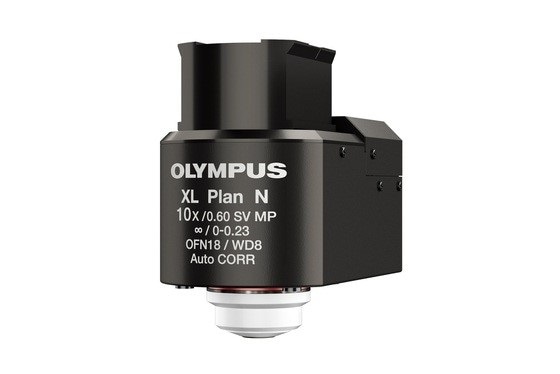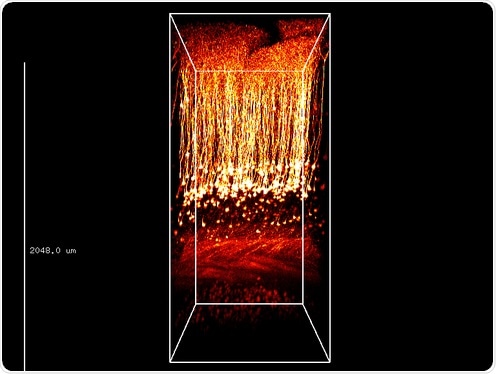Two new Olympus TruResolution objectives for multiphoton laser scanning microscopes deliver an industry-first automatic spherical aberration compensation function that also compensates for Z-shifts when operating the correction collar. This function automatically finds the best collar setting based on measured image contrast for clear, bright imaging.

Olympus TruResolution Objective
The objectives were developed jointly with the RIKEN Brain Science Institute in Japan to specifically address challenges in neuroscience, where researchers examine phenomena both at the surface and in deeper regions of the brain. However, as researchers peer deeper into tissue, increased spherical aberration degrades image quality.

3D reconstructed image of mouse in vivo brain (Thy1-YFP-H mouse sensory cortex) acquired using TruResolution objective with auto adjustment function. Image data courtesy of Dr. Hiromu Monai, Dr.Hajime Hirase and Dr. Atsushi Miyawaki, RIKEN BSI-Olympus Collaboration Center.
Designed for the FLUOVIEW® FVMPE-RS® multiphoton laser scanning microscope, TruResolution objectives are equipped with motorized correction collars that automatically and dynamically compensate for spherical aberration while maintaining the focus position. The result is bright, in-focus images from both the surface and deep inside tissue.
The objectives work with a computer algorithm that finds the best correction collar setting to yield the brightest image while maintaining focus on a fixed plane. Using this algorithm, optimal spherical aberration compensation can be automatically applied at each depth when capturing an image volume. The user can also directly control and assign their preferred collar settings via software.
Two TruResolution objectives are available, a 25x objective with an NA of 1.05 and a 2 mm working distance (FV30-AC25W) ideal for in vivo imaging, and a 10x objective with an NA of 0.6 and a working distance of 8 mm (FV30-AC10SV) designed for cleared tissue applications.